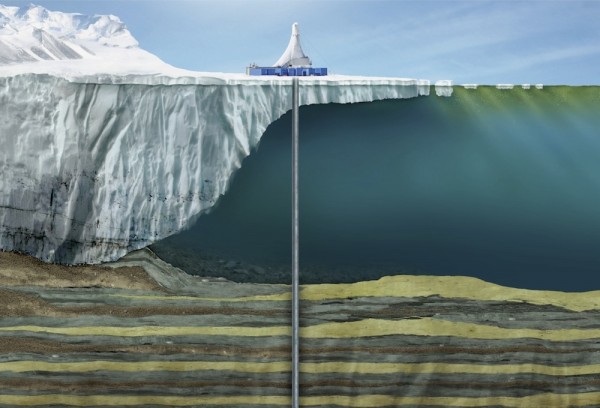![]()
![]() The Antarctic Geological Drilling Project – ANDRILL – is an ambitious program of drilling down to the sediments deposited around Antarctica in the past few tens of millions of years, to unravel the history of the Antarctic ice sheets: how and when they formed, and how they have waxed and waned in response to shifts in the Earth’s climate. We say ambitious because in order to access these valuable records, you have to drop a drill rig onto one of the Antarctic ice shelves, drill through it, lower your drill string through several hundred metres of icy water that said shelf is floating on, and then start recovering core. Did we mention the drill rig is on top of a floating Antarctic ice shelf?
The Antarctic Geological Drilling Project – ANDRILL – is an ambitious program of drilling down to the sediments deposited around Antarctica in the past few tens of millions of years, to unravel the history of the Antarctic ice sheets: how and when they formed, and how they have waxed and waned in response to shifts in the Earth’s climate. We say ambitious because in order to access these valuable records, you have to drop a drill rig onto one of the Antarctic ice shelves, drill through it, lower your drill string through several hundred metres of icy water that said shelf is floating on, and then start recovering core. Did we mention the drill rig is on top of a floating Antarctic ice shelf?
This is impressive stuff just on technical grounds alone. But as we discovered when David Harwood from the University of Nebraska, one of the ANDRILL chief scientists, gave a seminar in our department last Friday, the science coming out of the retrieved cores is even more impressive – and important, because it suggests that the Antarctic ice sheets, particularly the West Antarctic ice sheet, are rather more sensitive to small changes in global temperatures that had previously been assumed – something to consider the ANDRILL site for more details, particularly a simplified but still very cool interactive tool on the ‘Media’ page that allows you to explore how the waxing and waning of the ice shelves with temperature variations show up in sedimentary core records.
http://storify.com/allochthonous/kent-colloquium-andrill




Comments (2)